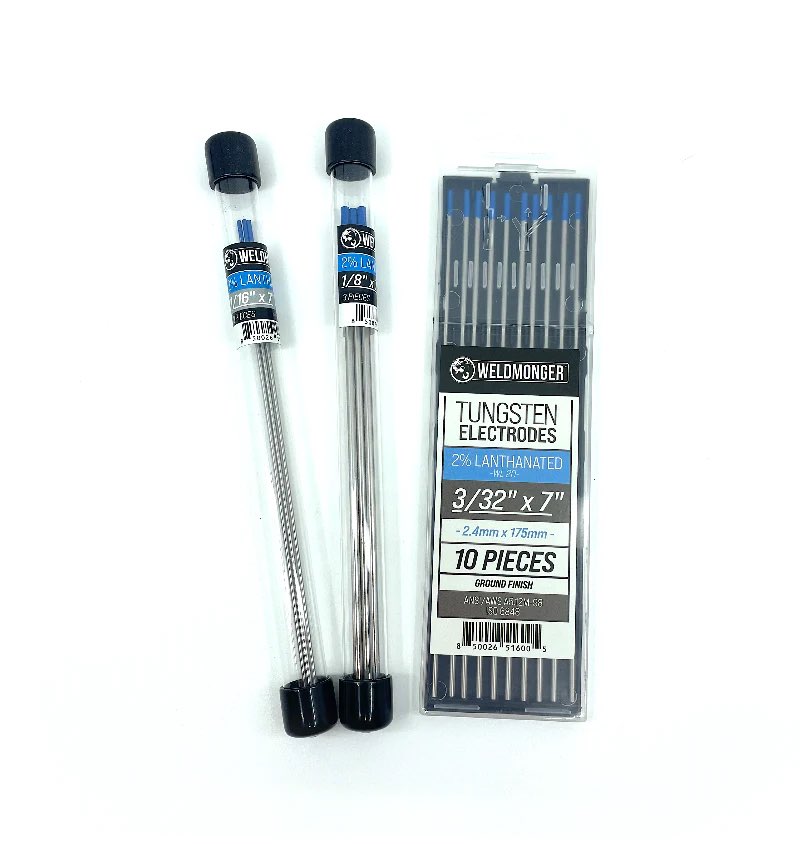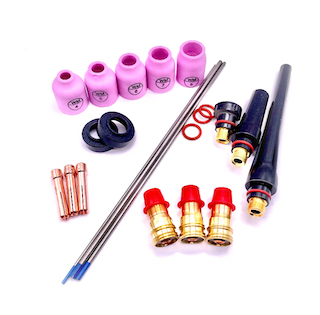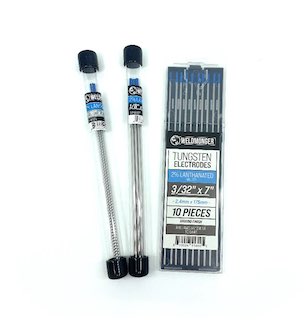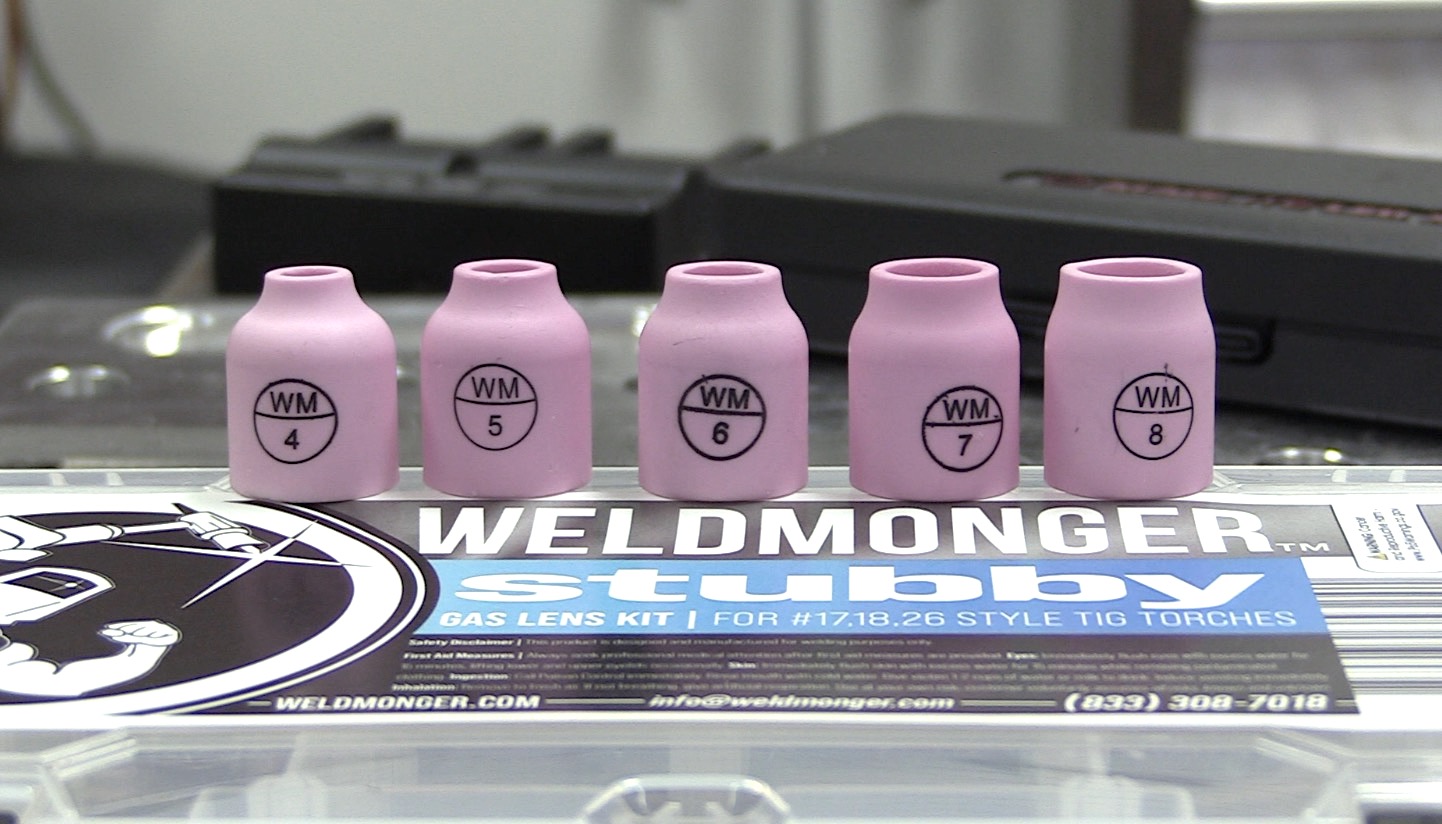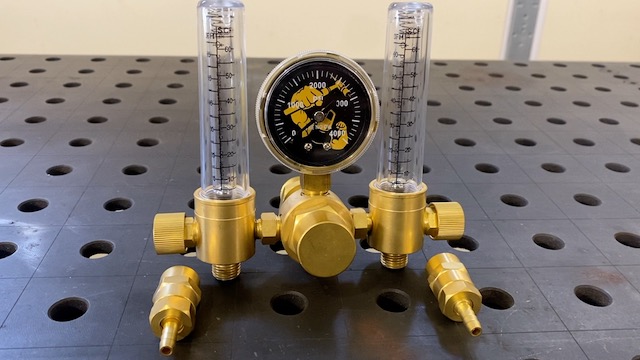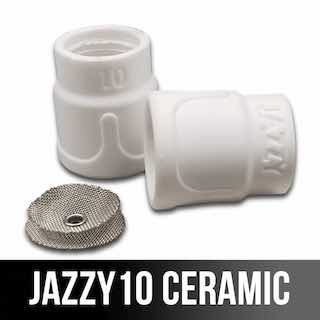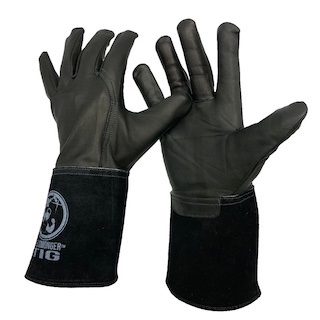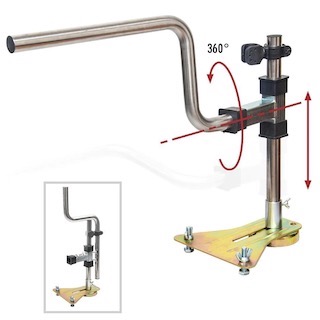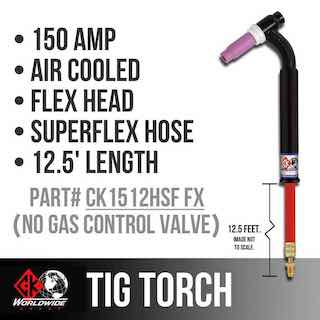Tungsten Electrode Selection and Prep for Stainless Steel TIG welding
- HOME
- TIG WELDING
- Electrode Selection and Prep for Stainless
Stainless Steel lap joint
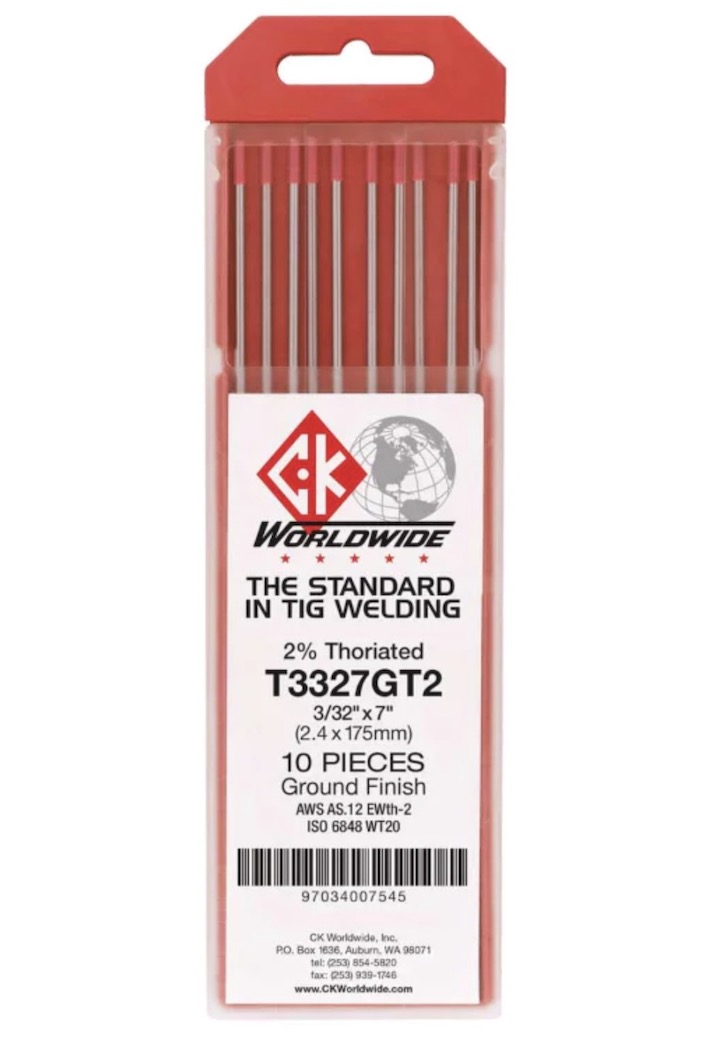
2% thoriated ( red) is probably still the best tungsten for welding stainless...but if you are concerned with thorium being hazardous, there is a great alternative
We put together this tungsten bundle because 3/32" is the most versatile and most commonly used tungsten but you still need a few 1/16" and 1/8"..
you know what I mean???
Learn more about PrimeWeld deals at weldmonger.com
Electrode Selection and Prep for Stainless TIG
The tungsten electrode is at the heart of any TIG welding setup. Selecting the correct type and preparing it properly is especially important when welding stainless steel.
A well-chosen and well-prepared electrode ensures a stable arc, better control, and cleaner welds. Here’s what you need to know.
Recommended Electrode Types for Stainless
2% lanthanated is a great all around tungsten for both AC and DC tig welding. But is not the best if you are mostly tig welding stainless steels.
In my opinion either 2% thoriated or 2% Ceriated hold a sharp tip longer
2% Lanthanated (Blue)
Great all-around performance
Easy arc starts and good low amperage stability
carrys a lot of amperage for thick aluminum welds on AC
2% Thoriated (Red)
Excellent arc stability, says sharp on DC
Slightly radioactive—use precautions when grinding
2% Ceriated
Good for DC welding and ok for light duty AC for aluminum
Long electrode life, stays sharp on DC and good arc consistency
Avoid pure and zirconiated tungsten for stainless—both are designed for AC welding on aluminum and will not hold a sharp tip.
Tungsten Sizing Guide
Choose your tungsten diameter based on material thickness and amperage:
- 0.040": Very thin stainless (razor blades, tubing)
- 1/16": Common for 16–20 gauge
- 3/32": For thicker material or higher current ( up to 250 amps on DC)
Use the smallest size ( within reason) that can handle the required amperage to maintain arc focus and reduce heat input.
There is a lot of overlap when it comes to what size electrode will work for a given amperage and it can be a tradeoff.
Small tungsten like 1/16" are cheaper than larger diameters and quicker and easier to sharpen.
3/32" are slightly more expensive but are more versatile when it comes to thickness and amperage range.
How to Prepare Your Electrode
1. Grind to a Point
- Always grind lengthwise to create a long, sharp taper
- Avoid grinding across the electrode—it causes arc wandering
- it is ok to grind sideways at first to remove material as long as you finish the grind with scratches running lengthwise
2. Use a Dedicated Tungsten Grinder
- Prevents contamination from other materials
- If using a bench grinder, designate one wheel for tungsten only
3. Keep it Clean
- If the tip becomes contaminated (dipped in the puddle), stop and regrind
- Contaminated tungsten creates an unstable arc and poor weld quality
Tip Shape: Why It Matters
- Sharp point = focused arc, ideal for stainless
- Blunt tip = broader arc, more heat input (not preferred for thin stainless)
For most stainless TIG applications, a tapered, needle-like point is best. It gives you tight arc control and better bead appearance.
The right tungsten makes TIG welding stainless steel easier and more consistent.
Match the tungsten electrode to your material and amperage, prep it properly, and maintain it throughout the job. Good tungsten habits lead to better welds.



